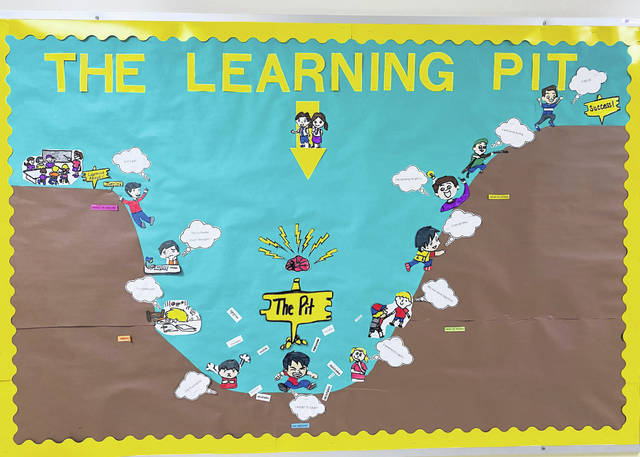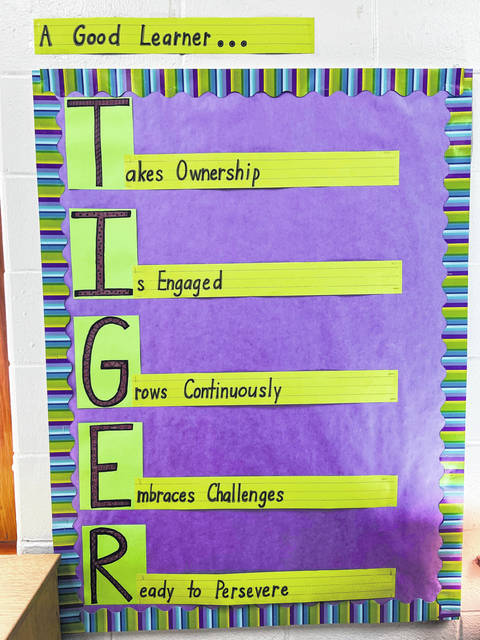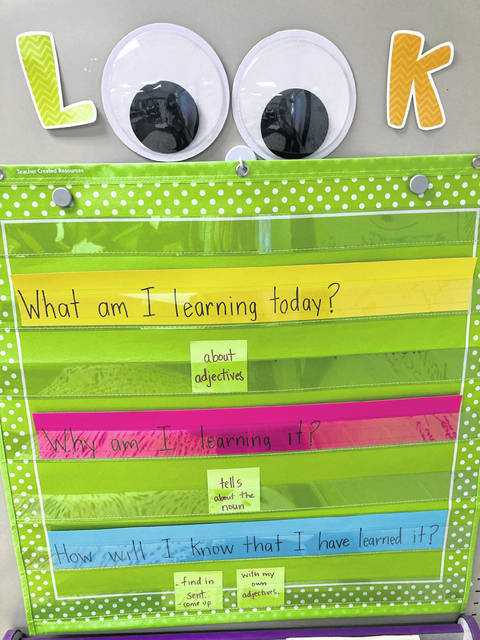


When Greenfield schools embarked on the new school year last fall, it was with a new initiative, one meant to strengthen the learning culture and create visible learners. Now as the school year comes to a close, how the Visible Learning Plan has influenced this school year can be seen.
The initiative is based on the worldwide, years-long research of professor John Hattie, and the implementation of the program has been to create a strong learning culture across all grade levels.
Through data and student surveys, the district previously found that students can readily explain what it takes to be a good student, but they grapple with describing what a good learner is. The work of visible learning teaches staff and students how to utilize learner dispositions, self-assess their learning, selects strategies for learning, and uses feedback to improve.
The learning dispositions have been the first step in implementing a multi-year Visible Learning Plan. Those learning dispositions include: taking ownership, embracing challenges, persevering, continually growing, and being engaged. Clarity in teaching and student clarity is another aspect of the plan that has been implemented in this inaugural year.
The plan is easily seen in the elementaries where there are posters and boards through all three schools that remind students of the learning dispositions and their application in learning something new. And in the classrooms across the district, learning intentions and success criteria are posted that set clear goals for the process of learning and help students not only see the steps to take to learning success, but to engage in the process.
Across the district, teachers and staff are seeing students apply to their learning the visible strategies they have learned through the year, and they are succeeding.
Rainsboro Elementary Principal Maggie Lyons said students and teachers are using the visible learning strategies and resources to become successful in their learning. As staff and students have learned more about visible learning and have been able to apply it through the year, teachers are able to be more clear in their instruction and students are able to tell what a good learner looks like.
“We have seen students being able to tell what they are learning and how they know they have learned it,” Lyons said, adding that in the school they have created a new learning culture where they are taking ownership, embracing challenges, persevering, being engaged, and continuously growing in learning.
Greenfield Elementary Assistant Principal Lindsay McNeal cited specific examples from teachers, each of whom noted students applying the strategies learned through visible learning.
“It is our belief at Greenfield Elementary School that all students and staff members are leaders in some aspect,” McNeal said. “They take ownership in their learning, continuously grow, persevere, engage in their learning tasks, and embrace challenges. Oftentimes, when we think of these words we are referring to what we would like students to do, but in this case we want our whole building to do this. Our staff can only be true teachers of these district learning dispositions if they are also utilizing them daily.”
Buckskin Elementary Principal Mike Shumate said he has seen that there seem to be less students acting out, and that’s likely because now they have a greater understanding of what is expected of them, and they are delivering. Everyone is speaking the same language, he said, and setting clear goals. That is imperative to successful learning.
Shumate said they started the year with working on one learner disposition per week, and now it has progressed to be included in every day’s morning announcements. It’s something they have made a game of as students are given clues that will help them guess what learner disposition is being highlighted.
In the middle school, principal Jason Potts said the focus has been to refine the learning intentions and success criteria while implementing the learner dispositions “so that students have a clear picture of what they’re expected to learn and how they are going to show it.”
And students are able to explain what they’re learning and how they did it.
“I try to remind teachers when they walk into a professional development session that you want to know what you’re going to do and learn. It’s the same for students. Explain to students what they are going to learn and how they’re going to show it by the end of the class period. It’s just about being clear to students, which they want.”
Potts added that the learner dispositions have been a “game changer” for the middle school, and it’s something that’s in front of students daily. Also, students are recognized for exhibiting these behaviors by what is called a Positive Office Referral where they meet with Potts and receive a small reward for their accomplishment.
McClain Principal Matt Shelton said he has seen the progress among the high school students, too. As in the other buildings, learning intentions and success criteria are posted in classrooms and teachers talk with students each day about them.
Student surveys taken throughout the year have shown improvement in students’ understanding of visible learning as the year progressed. Students aren’t just learning a new way to learn, but are applying the aspects of the visible learning. Shelton said he has heard students in conversation using the visible learning language, and in mock interviews he has conducted, students have directly used what visible learning has helped them understand.
“I think a big success for us is just having students have a better, clearer understanding of what they are learning in each class and how they will know if they really mastered it,” Shelton said.
GEVSD Director of Instruction Alisa Barrett said that throughout the district building a strong learning culture for all students has been the primary focus all school year. As the district moves forward, she said, the plan is to build on the success of this first year and continue to strengthen academic programs through the implementation of evidence-based practices found in the visible learning research.
“Our goal is that every student who attends a Greenfield school will be able to articulate what they are learning, self-assess their learning, and have a clear understanding of the purpose of their learning,” Barrett said.
For district information, go to greenfield.k12.oh.us or to the district Facebook page. The individual buildings also have their own Facebook pages.
Angela Shepherd is a correspondent for the Greenfield Exempted Village School District.




